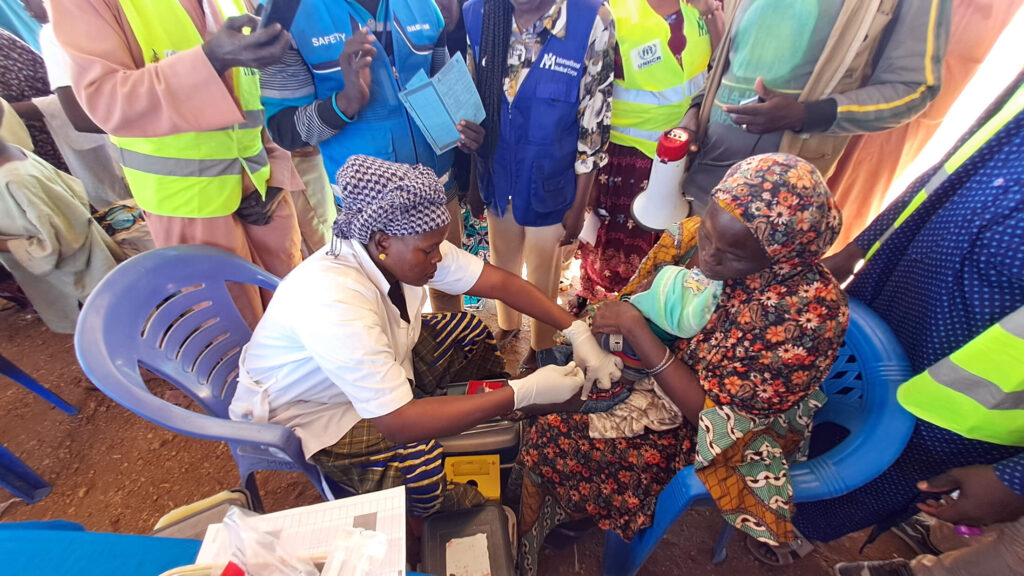Five years ago, when the COVID-19 pandemic hit, the world shut down—businesses closed, people who could started working remotely and social events were canceled. Though we have mostly recovered from those dark days, communities are now grappling with new outbreaks of infectious diseases—including cholera, dengue, Ebola and mpox—that pose significant threats to public health. As we learned with COVID-19, an outbreak can quickly become a pandemic if left unchecked. Let’s take a look at which diseases are currently prevalent, what is contributing to their spread, and what International Medical Corps is doing to prevent outbreaks and stop transmission.
Cholera
Cholera is a life-threatening and highly preventable disease, most commonly spread through contaminated water and shellfish. Symptoms include severe diarrhoea and vomiting, which can lead to dehydration and death in just a few hours. With safe water, proper hygiene and widespread vaccination, most cholera cases can be prevented. However, though vaccines and treatment exist, people still die from cholera every year.
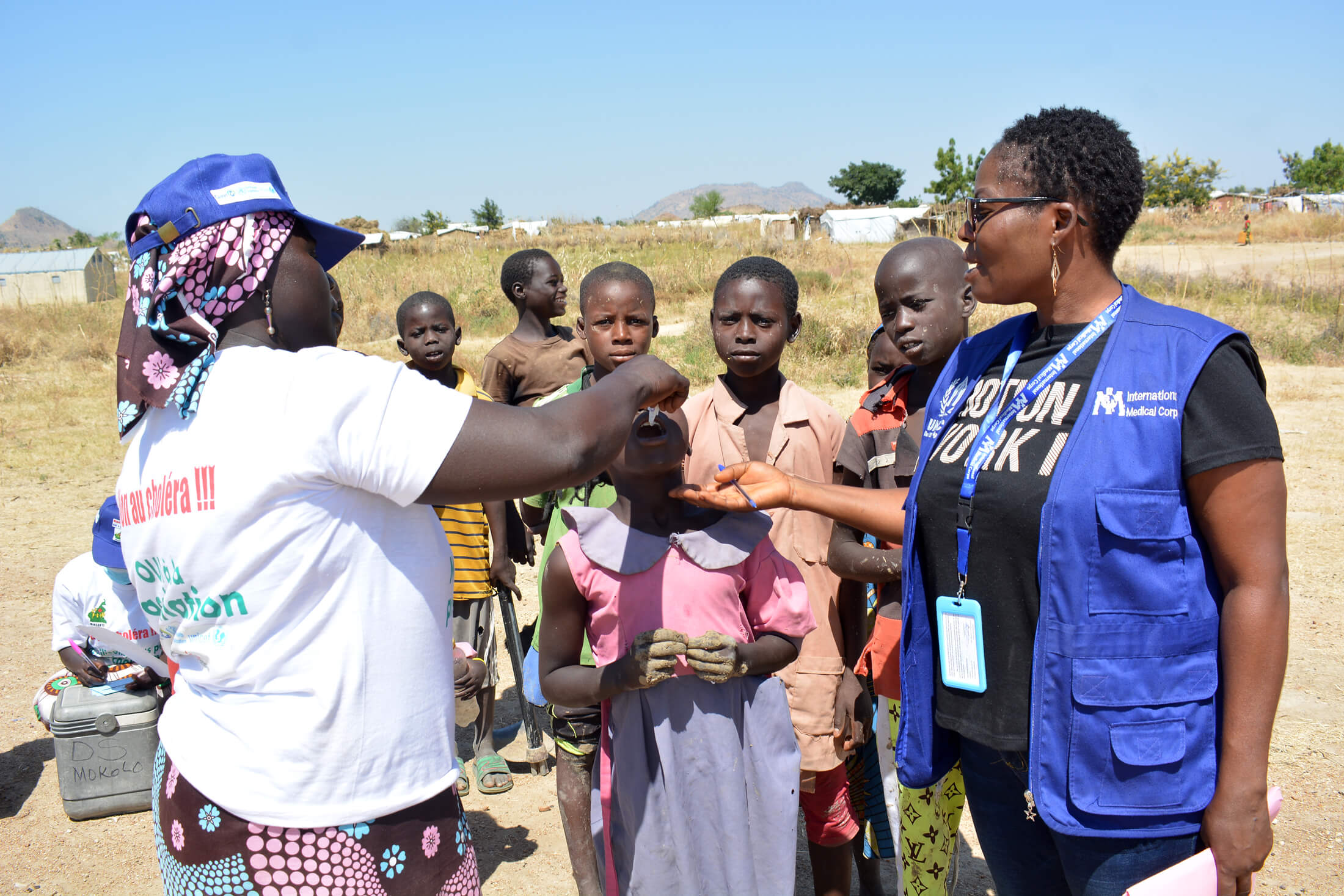
More than 30 countries, including Cameroon, have recently reported significant cholera outbreaks linked to flooding, poor sanitation and mass displacement. The demand for oral cholera vaccines far exceeds the supply, leading the World Health Organization (WHO) to switch to a single-dose strategy to stretch stockpiles. Given this, response efforts are focused on water, sanitation and hygiene (WASH) interventions, rapid diagnostics and decentralised treatment centres.
Learn how our team responded to a cholera outbreak in Cameroon.
Dengue
Dengue is a mosquito-borne illness that is easily transmitted in warm climates where the insects thrive. Symptoms include high fever, intense muscle pain, pain behind the eyes, headache, rash, nausea, vomiting and, in extreme cases, death. Cases have recently been reported in the Americas, including Argentina, Brazil, Peru and Venezuela. Due to warmer temperatures and expanding mosquito habitats, Europe has also experienced local transmission.
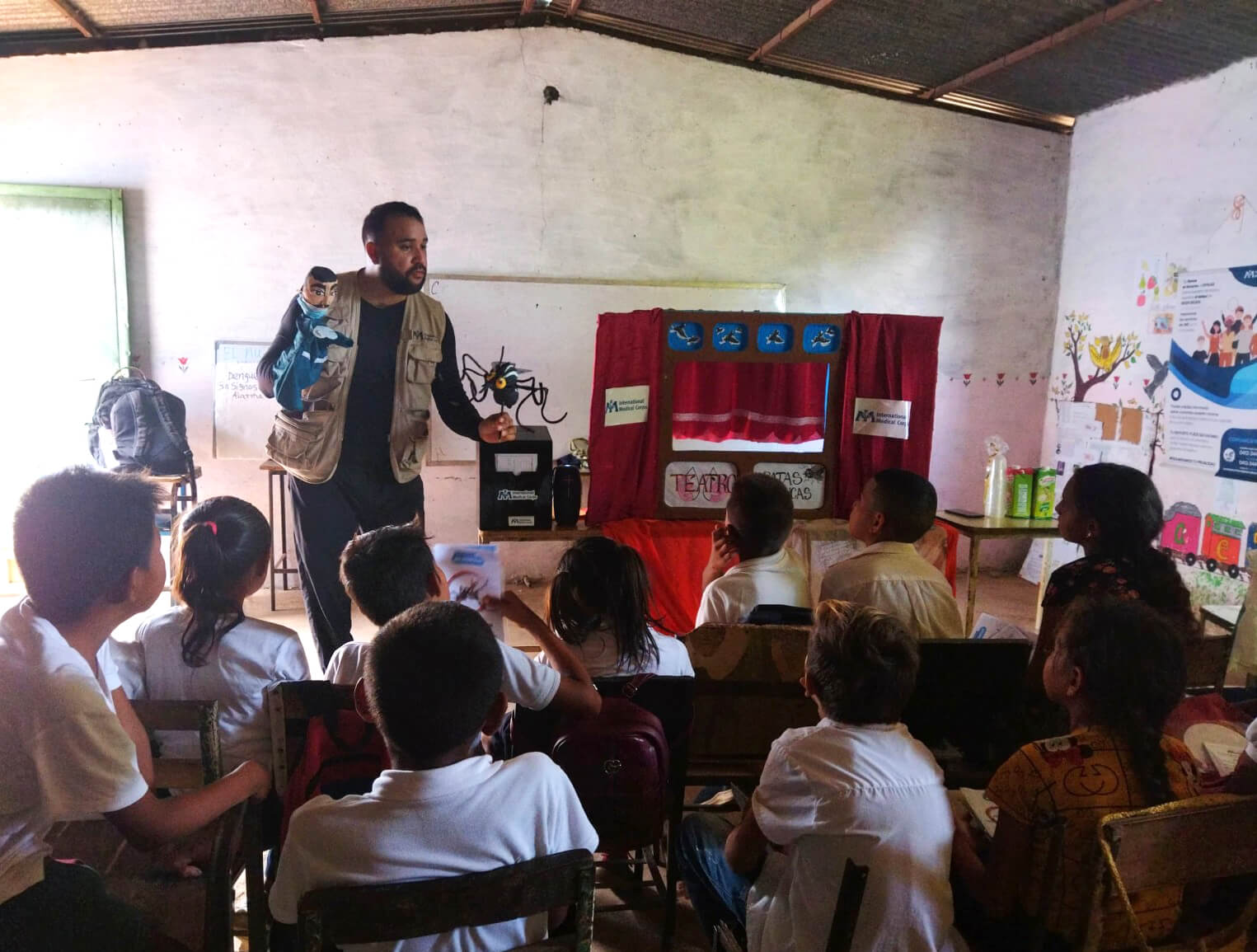
International Medical Corps is currently combating the spread of dengue in Venezuela, where we have operated since 2019. We recently distributed household dengue-prevention kits to families in need. Each kit includes a mosquito-proof water storage bucket, a perforated bucket for water treatment, a filtration system and two long-lasting insecticide-treated mosquito nets. By improving water safety and providing mosquito protection, the kits help prevent dengue and reduce cases of other waterborne diseases.
Ebola
Ebola is a highly contagious disease that is spread through contact with infected bodily fluids, including on surfaces. Symptoms include fever, headache, fatigue, muscle pain, diarrhoea and vomiting. The mortality rate can be staggeringly high, topping 90% during some outbreaks. Thankfully, International Medical Corps developed a strategy that helps mitigate the spread of this deadly disease—screening and referral units, known as SRUs.
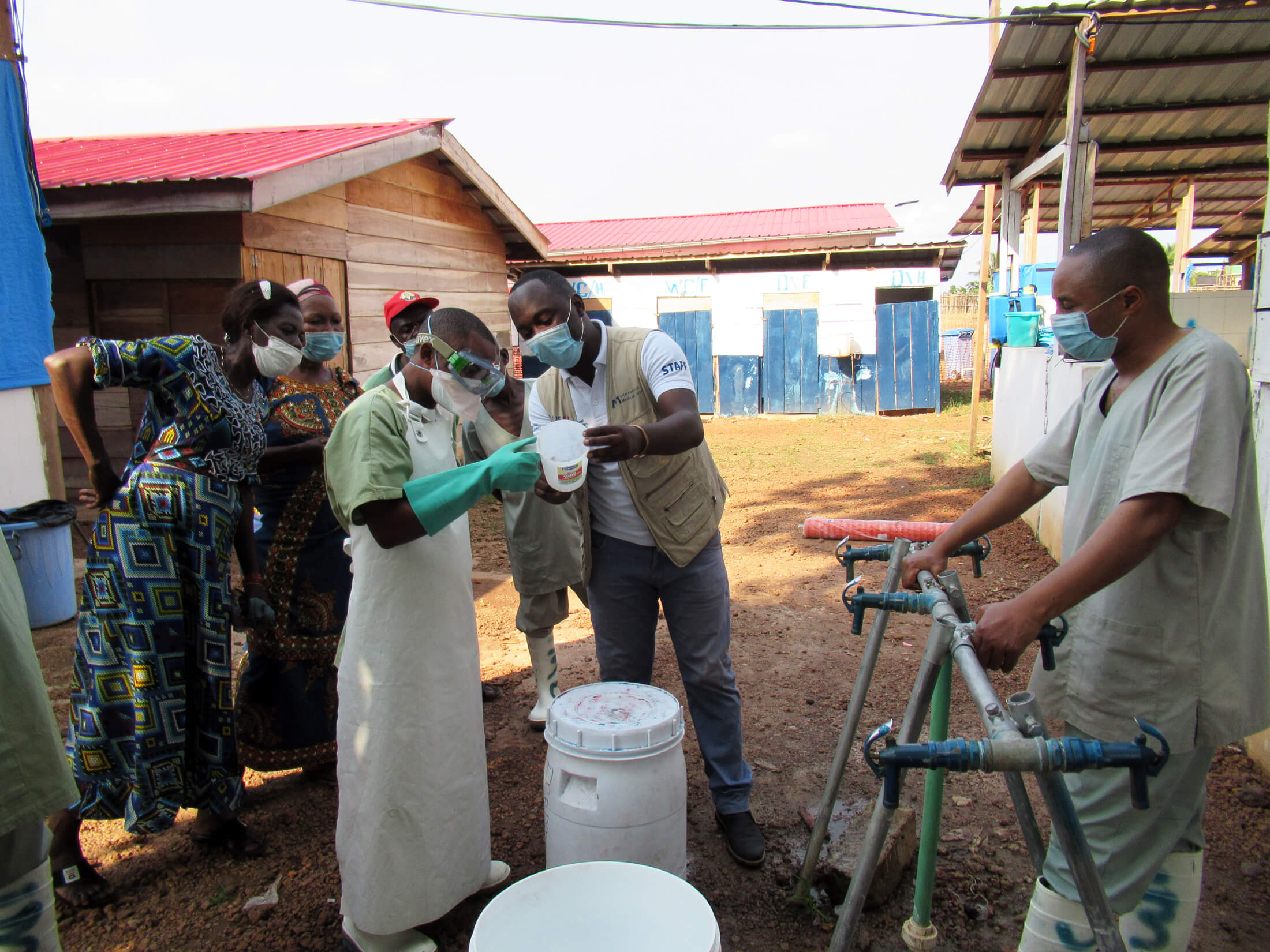
“When a patient approaches a health facility during an outbreak, they are taken aside and screened, usually by taking their temperature,” explains Dr. Abdou Sebushishe, Senior Global Health Advisor. “If they have a fever or other relevant symptoms, we move them to an isolation area for further testing to confirm that they have the virus. We used this approach not only during Ebola but also COVID-19, and we have continued to use this process to contain infectious disease outbreaks around the world.”
Ebola response efforts also include vaccinating people who have come in contact with infected individuals during outbreaks, and strengthening diagnostic capacities at key border points. Recent Ebola outbreaks in the Democratic Republic of the Congo (DRC) and Uganda highlight the need for continued vigilance.
Learn about our history of fighting Ebola in DRC.
Mpox
Mpox (previously known as monkeypox) is spread through direct contact with infected individuals. Symptoms include fever and a rash that spreads across the body, causing painful sores and lesions. The 2022–23 global mpox outbreak led the WHO to declare a public health emergency of international concern. Though this has now officially ended, the virus remains endemic in some regions, including Central and West Africa. Challenges include vaccine shortages in endemic countries and stigma affecting healthcare-seeking behaviour. Current response measures focus on improving diagnostics, distributing vaccines and engaging communities.
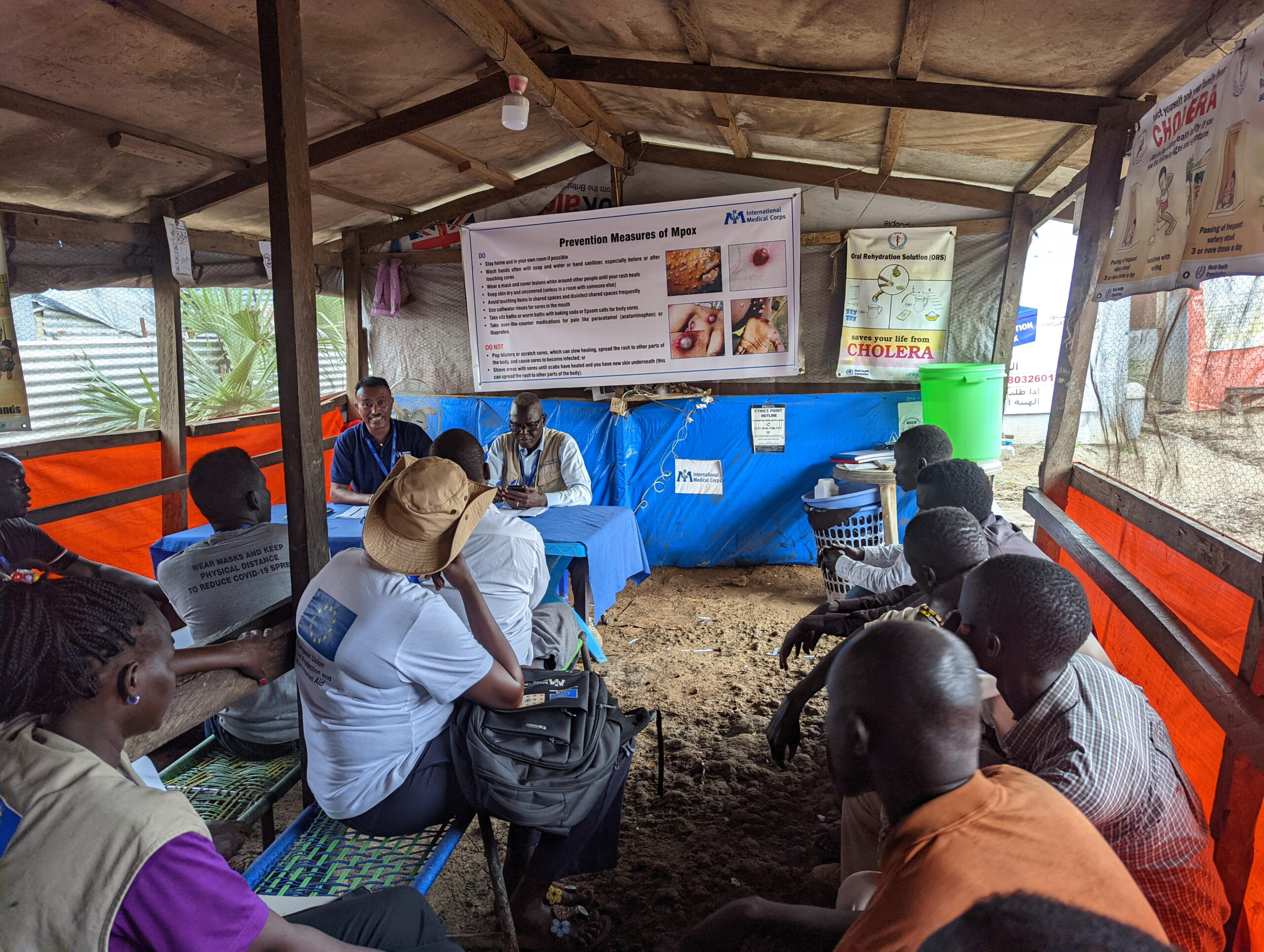
Last year, International Medical Corps launched a comprehensive emergency response to mpox in Central African Republic (CAR), DRC, Nigeria and South Sudan.
What Causes Infectious Diseases to Spread?
Anti-Microbial Resistance
Growing resistance to antibiotics, antivirals and antifungals threatens the effectiveness of treatments. Drug-resistant infections caused by multidrug-resistant tuberculosis, drug-resistant staph and hard-to-treat gut bacteria are spreading. Limited lab capacity and inadequate access to new antibiotics make humanitarian settings particularly vulnerable to these issues.
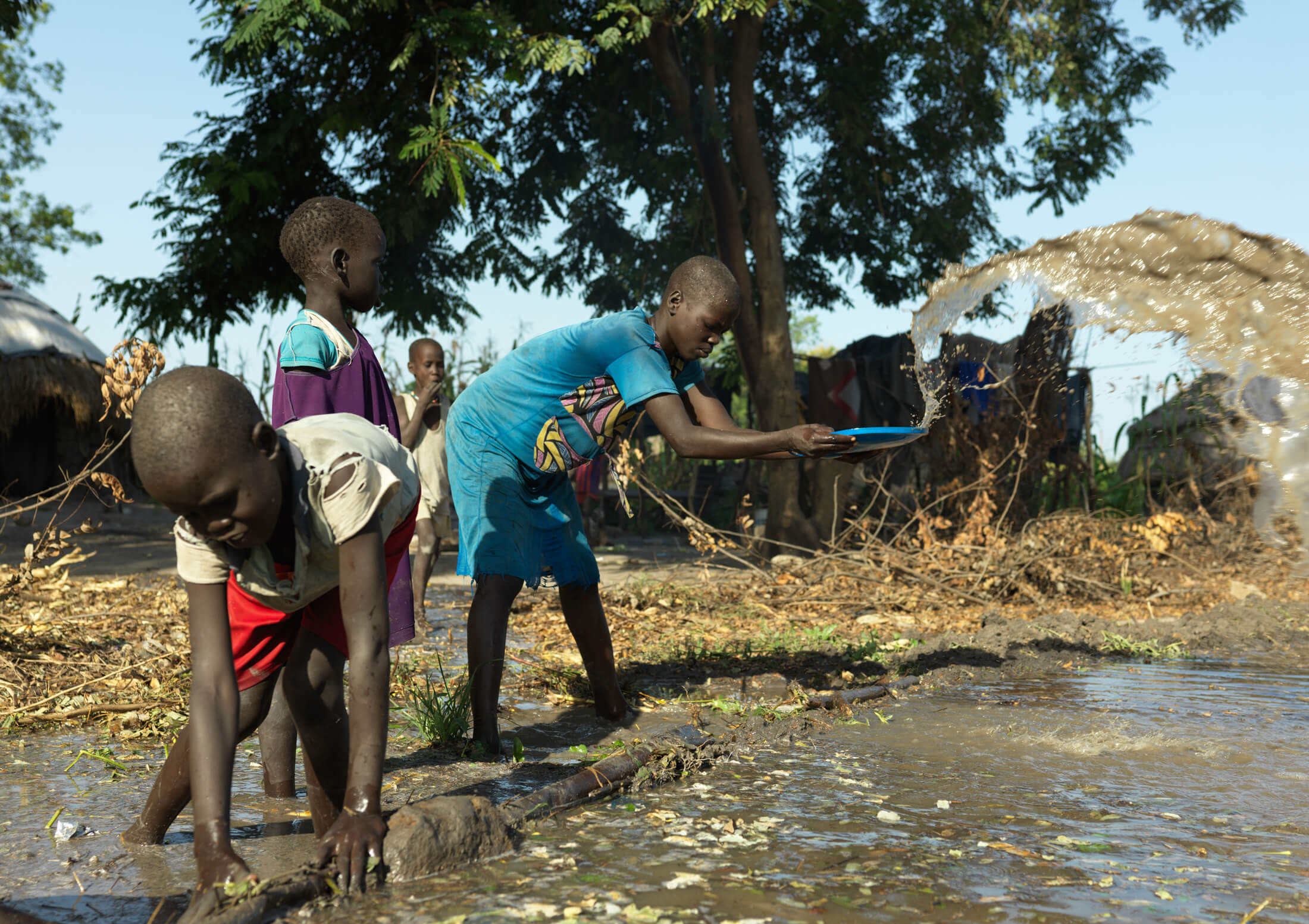
Extreme Weather
Heatwaves, flooding and increased mosquito populations are driving vector-borne diseases—such as chikungunya, dengue, malaria and Zika—into new regions. Additionally, a lack of clean water and modern sanitation facilities can exacerbate food- and water-borne diseases such as cholera, hepatitis and typhoid. To combat this, International Medical Corps installs water-supply systems in underserved communities, bringing safe water to people in such countries as Afghanistan and Sudan, among others. Our teams also provide emergency services to communities affected by flooding, such as those in Cameroon, South Sudan and Yemen.
Health Misinformation
The increasing spread of health misinformation—mainly through social media and non-expert sources such as influencers, celebrities and others without a scientific background—undermines public trust in science-based recommendations. This erosion of trust can lead to lower vaccination rates, delayed health-seeking behaviour and medical care, and resistance to evidence-based interventions—exacerbating the spread of infectious diseases.
This is one reason why risk communication and community engagement are always part of our lifesaving activities. For example, International Medical Corps recently published an explainer to help combat misinformation about mpox.
Emerging and Unidentified Threats
Though cholera, dengue, Ebola and mpox outbreaks are significant, there are other emerging threats, including avian influenza (aka bird flu), and Marburg and Nipah viruses. The latter are transmitted from bats and through human-to-human contact, and there are currently no licensed treatments.
There are also unidentified threats that pose significant challenges to global health. For example, communities in DRC have been grappling with an outbreak of an unidentified infectious disease since January—resulting in nearly 1,100 cases and more than 60 deaths. Preliminary investigations have ruled out malaria, as well as the Ebola and Marburg viruses. Still, the rapid progression and severity of the illness suggests that other factors or pathogens may be involved, highlighting the urgent need for further investigation and response measures. In addition, bioterrorism can severely impact communities and lead to death. Common pathogens spread via bioterrorism include anthrax, plague and smallpox.
So, what can we do to prevent future outbreaks?
Infectious diseases will continue to evolve. We must work together to build a resilient global health framework and continue to build trust at the local level. With coordinated disease surveillance, innovative vaccine strategies and effective community health systems—especially in low-resource settings—we can stay ahead of emerging threats and create a healthier, safer world for all.
Learn how International Medical Corps works with local communities to combat infectious diseases and improve health outcomes, and learn how you can help people across the globe better access clean water, vaccines, emergency health services and other vital resources.
